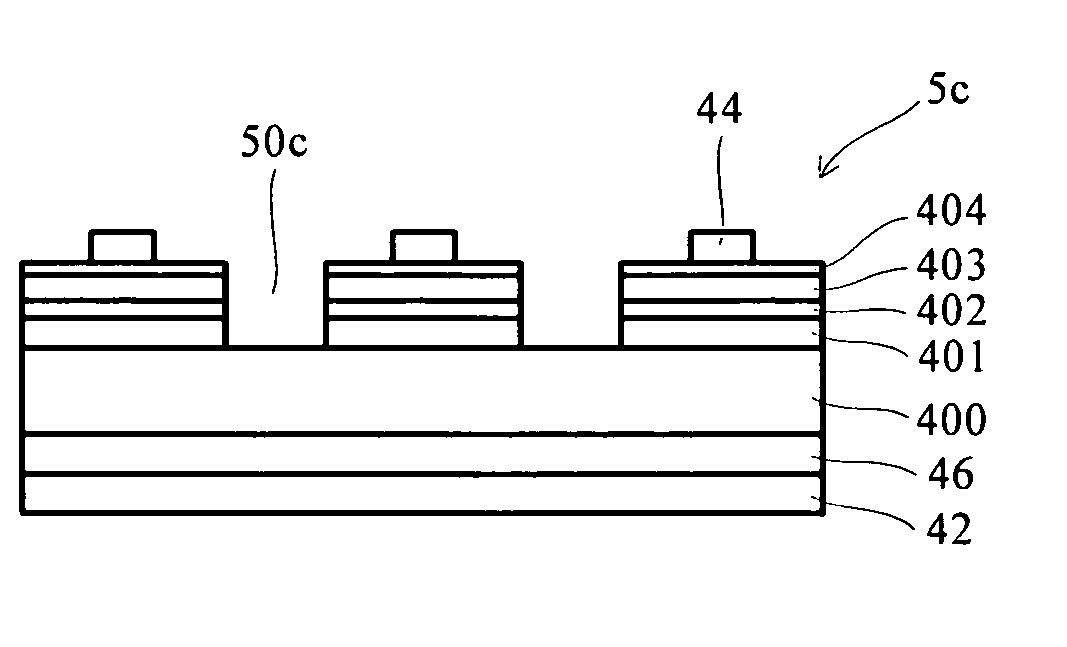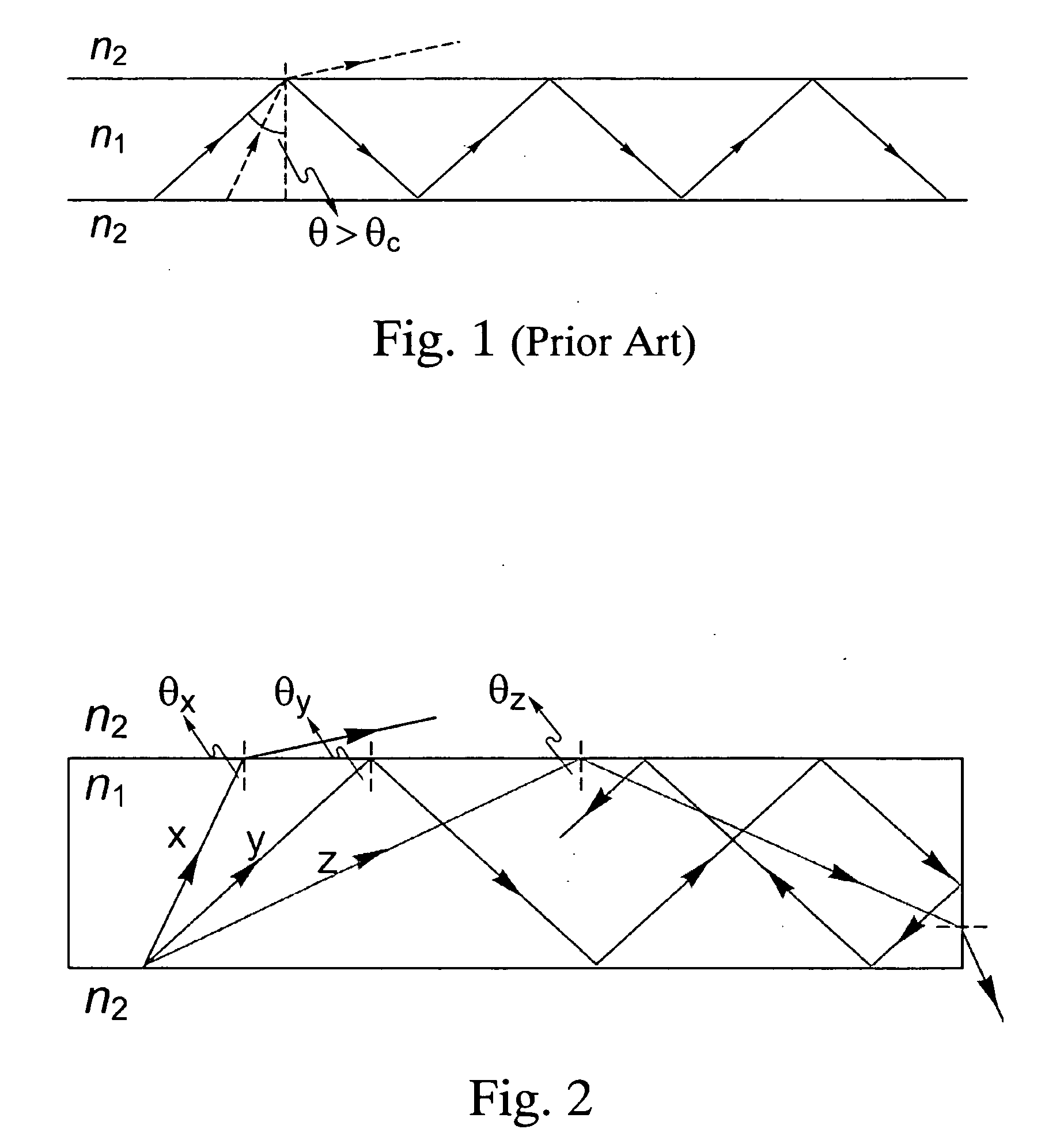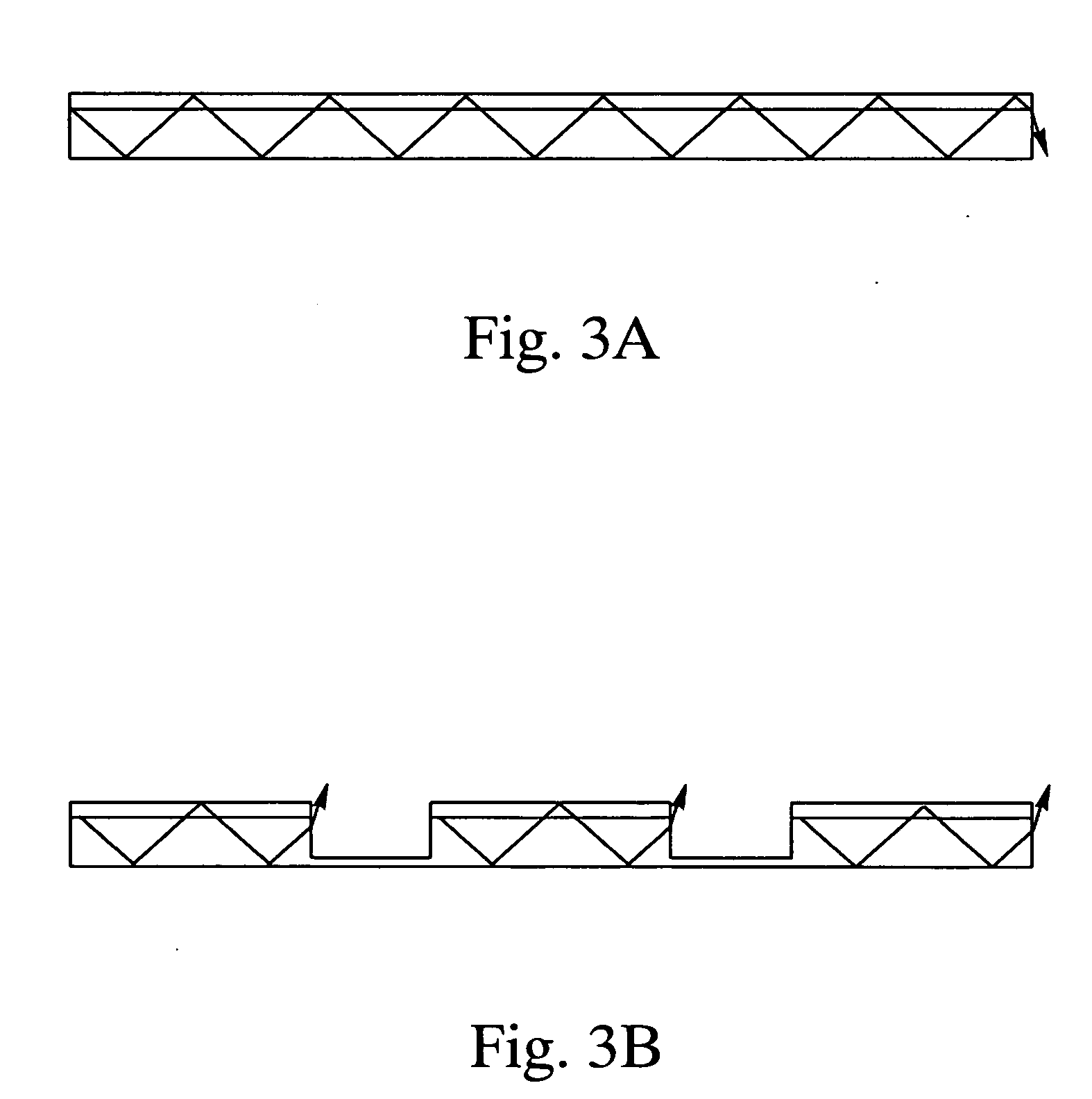Large-sized light-emitting diodes with improved light extraction efficiency
a light-emitting diode and large-scale technology, applied in the field of semi-conductor light-emitting devices, can solve the problems of reducing the internal quantum efficiency of the led chip, and increasing the temperature of the chip, so as to improve the light extraction efficiency of the light-emitting diode chip, reduce the length of the optical path, and increase sidewall areas
- Summary
- Abstract
- Description
- Claims
- Application Information
AI Technical Summary
Benefits of technology
Problems solved by technology
Method used
Image
Examples
Embodiment Construction
[0030] The present invention is a light-emitting device with an array of window openings to enhance the light extraction efficiency from this device. This array of window openings is employed to create a much larger sidewall area to enhance the light extraction from the sidewall of these openings. With this array of window openings, photons trapped due to the total internal reflection can propagate within the device and be extracted from the sidewall of these openings. It is of great importance for large-sized LEDs to extract photons employing this array of window openings because of the huge loss of photons caused by absorption. These openings are created by etching deep into the epitaxial layer or may be even down to the substrate. A variation of designs can be applied to the array of window openings. The window openings can be etched very rough to enhance the light emission from the sidewall; or reflected mirrors can be fabricated in the windows to redirect photons escaping from ...
PUM
 Login to View More
Login to View More Abstract
Description
Claims
Application Information
 Login to View More
Login to View More - R&D
- Intellectual Property
- Life Sciences
- Materials
- Tech Scout
- Unparalleled Data Quality
- Higher Quality Content
- 60% Fewer Hallucinations
Browse by: Latest US Patents, China's latest patents, Technical Efficacy Thesaurus, Application Domain, Technology Topic, Popular Technical Reports.
© 2025 PatSnap. All rights reserved.Legal|Privacy policy|Modern Slavery Act Transparency Statement|Sitemap|About US| Contact US: help@patsnap.com



